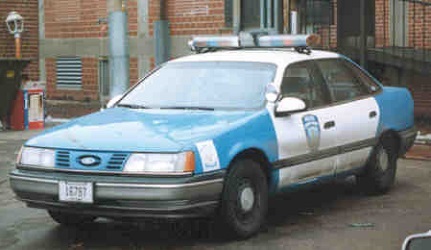
While muscle cars can be great and have their own place in the auto world, there are still some that deserve to be appreciated. Here are some examples. 1968 Chevrolet Biscayne is a solid luxury sedan. It was ideal for Sunday drives and featured a powerful, 427-cubic inch V8 engine. Bisquick became its name. These cars show the incredible power that a big-block engine can provide to a small sedan.
X-100
You might not know the Mercury Marauder X-100 if you love classic muscle cars. The X-100 was a rare-looking car, with performance that rivaled a Lincoln Continental. It was constructed in 1971. It weighed in at the same weight as a fully loaded Chrysler 300 C. But its power was remarkable, with a maximum of 360 horsepower. If you haven't yet owned one, you should definitely check out the X-100.

Coronet
The Coronet was a midsize sedan that got a powerful engine for the late '60s muscle car era. The Coronet offered a lot of potential and was available with many aftermarket options. The Coronet can be transformed into a serious hot rod or track car with a modern Hemi engine. Although the Coronet has been underrated, it remains a classic muscle vehicle with lots of potential.
GNX
The Buick GNX is a turbocharged muscle car with a 3.8-liter V6. The turbocharged V6 produces 276 horsepower and 360 lb/ft of torque. This makes the car an impressive performer in the quartermile drag race. It is well ahead of other high-performance cars. In addition, it can hit 102 mph, a quarter-mile time that would be a record for most cars.
XR7
The Mercury Cougar XR7 is one of the better known muscle cars from the 1970s, and for good reason. It was an exceptional car that combined muscle car power with luxury and refinement. Although its base engine is only 210 horsepower, the XR7's optional 429 big block delivers 325 hp. The car's interior features wood paneling and leather seating. The XR7 was a luxury muscle car that is rare.
Oldsmobile Jetstar
The Oldsmobile Jetstar muscle car was full-size and was made only in 1964 and 1965. The Jetstar's rear window was concave and the roofline was squared-off, just like the Pontiac Grand Prix. It was considerably more expensive than its Starfire counterpart. Jetstars also came with bigger engines. These included a 394 cu-in, 345-hp engine. The 1964 Oldsmobile Jetstar came with a four-barrel carburetor. The 1965 model featured a stronger engine, a 421-cu-in 376-hp Tri-Power.

Torino GT
Ford made some incredible muscle cars, but it was the Torino GT that stood out. It was the first Torino GT full-size car to come with a V8 motor, making it an impressive machine. The Torino GT was black with a functional air scoop and a four barrel Holley carburetor. Edelbrock intake was also included. The car was great for family hauling, yet still had lots of power. The 427 Cobra Jet could actually go 14 seconds on a 4-speed manual transmission.
FAQ
How long is an automotive course?
An automotive course lasts for three years.
The first year of your training is devoted to theory. You will learn all about cars. The second year is spent on practical training where you learn how to drive, fix engines, and do other mechanical jobs around the car. The final year is spent doing a placement at a local garage, which gives you experience in fixing real-world problems.
How long does it take to become a good mechanic?
A mechanic is only an expert if they have years of experience. A professional mechanic will teach you how to fix cars.
You will be required to spend time at a car garage learning as much as you can about cars. You'll need to study mechanical engineering books on mechanics and car design.
Additionally, you will need to attend an auto school.
It's important to start early. Do not wait to learn automotive technology. Start studying automotive technology now to become a mechanic.
How can I prepare myself for a mechanic apprenticeship
It is vital to be able to comprehend what you are doing. You must understand the workings of cars. This way, you know where to start when you go on your first day at the garage.
It is also important to be able to fix small problems like broken lights or tires.
You will be able to diagnose and repair problems yourself.
For the purpose of putting them back together again, you'll need to be able to identify how each piece fits together.
Finally, you should be able use tools safely.
All of these factors will allow you to become a skilled mechanic.
Is it hard to be an apprentice mechanic?
It's not easy, however, it is very rewarding and offers many opportunities for growth.
You will need patience and perseverance. Also, you must know how to fix trucks, cars, and motorcycles.
Customers and loved ones can place a lot of pressure on you. But, you shouldn’t be pressured to make any decisions you aren’t happy with.
If you enjoy fixing cars, it could be a great career choice. You can make a decent living and build your business.
But, you might prefer a different path. In this case, you could consider becoming a technician instead.
This requires you to use your technical expertise in support of other workers. Technicians could benefit from your technical expertise to solve problems or teach new techniques.
Another option is becoming a service advisor. When customers bring their cars into a garage, they will receive advice and assistance.
Your choice is based on what you choose to do. There are plenty of options available, and you can choose which suits you best.
Is it worth being a mechanic.
The answer to that question depends on what your life purpose is. If you're looking for money, then it's true. But, if there are meaning and purpose in your life, then it's not.
If you don’t have any mechanical skills, it’s pointless to get into it. It will just waste your time. It's not going make you millionaire. It will not make you famous. And it's unlikely to change your life.
You would need to spend years learning how to do everything properly. Then you'd still have to pay someone else to fix your car when it breaks down. That's why most people don't bother doing it at all. They find something else to do.
Summarising, if your goal is to make lots of money, go for it. But if you want to live a meaningful life, stay away from the mechanic's industry.
Statistics
- According to the BLS, total auto technician employment is expected to exceed 705,000 by 2030. (uti.edu)
- 52% of Mechanics in the United States think their salaries are enough for the cost of living in their area. (indeed.com)
- Apprentice mechanics earn significantly less hourly than mechanics who have completed training, with a median wage of approximately $14.50 an hour, according to PayScale. (jobhero.com)
External Links
How To
How to correctly diagnose your vehicle for repairs
The symptoms of your vehicle are the first thing you need to look at in order to determine whether it is in dire need of repairs. These steps will help you diagnose your car properly.
-
Check engine lights. Make sure to check all dashboard indicators like the engine light indicator (oil pressure gauge), the battery indicator (battery light indicator), and the RPM indicator (rpm gauge). If any of these indicators have been flashing continuously for several days it could mean that there is something wrong with your vehicle.
-
Inspect the tire treads. Tires with worn treads could cause problems when handling or braking. The treads of the wheels should be inspected as well. They should be smooth and clean. The best way to do this is to remove the wheels and take them off. Check the tread condition with a flashlight.
-
Monitor the level and consistency of your brake fluid. You must keep track on the level of brake fluid in your vehicle. This ensures that your brakes work properly. Low brake fluid levels could cause your brakes to fail when you apply pressure.
-
Test the suspension system. Vehicles usually have a suspension system that helps absorb shocks and vibrations while driving. It improves control and allows for smoother accelerations or decelerations. You might notice a wobbly feeling or uncontrollable shaking in your vehicle if it has a problem with its suspension. To test whether your vehicle has a suspension issue, try putting weight on the front or rear axle and observe the movement.
-
Examine your steering column. Steering columns are used to connect the steering wheel to the rest of the vehicle's components. Sometimes, steering columns are damaged by accidents. It is recommended to replace any steering column that feels loose, or shakey.
-
Pay attention to the exhaust pipe. Exhaust pipes help move gases from the combustion chamber to the atmosphere. If your exhaust pipe leaks or cracks, it will allow harmful fumes into your cabin. If your tailpipe bends, it is important to fix it immediately.
-
Look under the hood. Check under your hood for any unusual or missing components. There could be fluid leaking from your engine. If you smell something strange coming from your engine compartment you should call a professional technician.
-
You should inspect your air filter. The vehicle's outside environment may cause the air filter to collect dust and debris. Your vehicle will run less well if it has a dirty filter. Replace your air filter regularly.
-
The fan belt should be checked. The fan belt that connects your vehicle to the transmission is called the engine fan belt. The engine will not turn if the fan belt breaks. It's easy to replace the belt. All you need are a screwdriver & pliers.
-
Check the radiator hose and hoses. The radiator hose carries water from the radiator to the engine. If it becomes cracked or damaged, it can leak hot liquid onto the engine. To repair the leaky hose, all you need is a pair if needle-nosepliers.
-
Make sure you have the windshield wipers checked. Windshield wipers use electricity to remove snow and rain. They can leave streaks on your windows glass if they stop working. Change the washer fluid to fix the problem.
-
The battery cables should be checked. The battery cables supply power to your car's electrical systems. Make sure you disconnect the negative cable before replacing batteries. Failure to do so can damage your alternator.
-
Be sure to check your headlights. The headlights provide illumination for the road ahead. If they don't work properly, it can cause poor visibility. To determine if your bulbs are out of date, check them.
-
Check the lights. Lights warn other drivers when you approach them at night. One that doesn't work could cause you to be distracted, and possibly lead to an injury.
-
Make sure you check your brakes. Before you get in a car accident, your brakes will be slowing down your vehicle. If they aren't working correctly, you could lose control of your car and crash.
-
Check the oil regularly. Oil keeps your engine lubricated. It prevents metal parts from rusting too quickly. It is recommended to change the oil once a month.